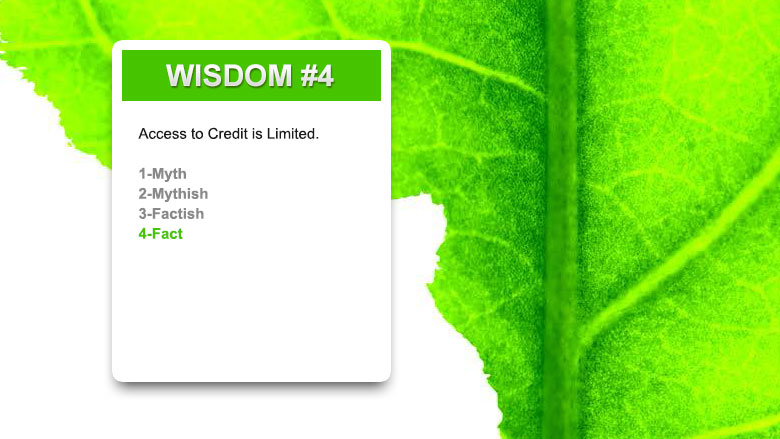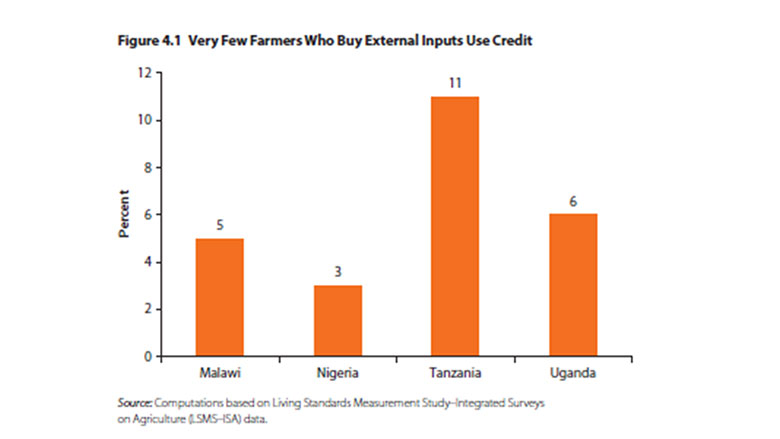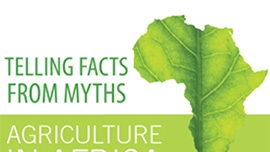COMMON WISDOM # 4: Access to credit is limited
SCORE: 4-Fact
FINDINGS
- The use of credit (formal, informal, tied, and untied) for financing modern inputs is extremely low.
- This applies in all countries, across farm sizes and for food as well as cash crops.
- Farmers primarily finance modern input purchases with cash from nonfarm activities and crop sales.
- Tied output-factor market arrangements with input traders and output traders only play a minor role in financing external inputs, but appear to be relatively widely used for labor credit.
- “Traditional cash crop” farmers selling to processors rarely receive credit from processors, except in a few enclaves, such as larger tobacco farmers in Tanzania.
- Nonetheless, access to loans (mostly informal) has a favorable effect on fertilizer use .
- Nonfarm self-employment is associated with greater use of fertilizers.
POLICY MESSAGES
Rural development policies and programs that spur broad development of the rural nonfarm sector would benefit farm input purchases and thus productivity and food security. These policies and programs would be important complements to credit policies and programs.


